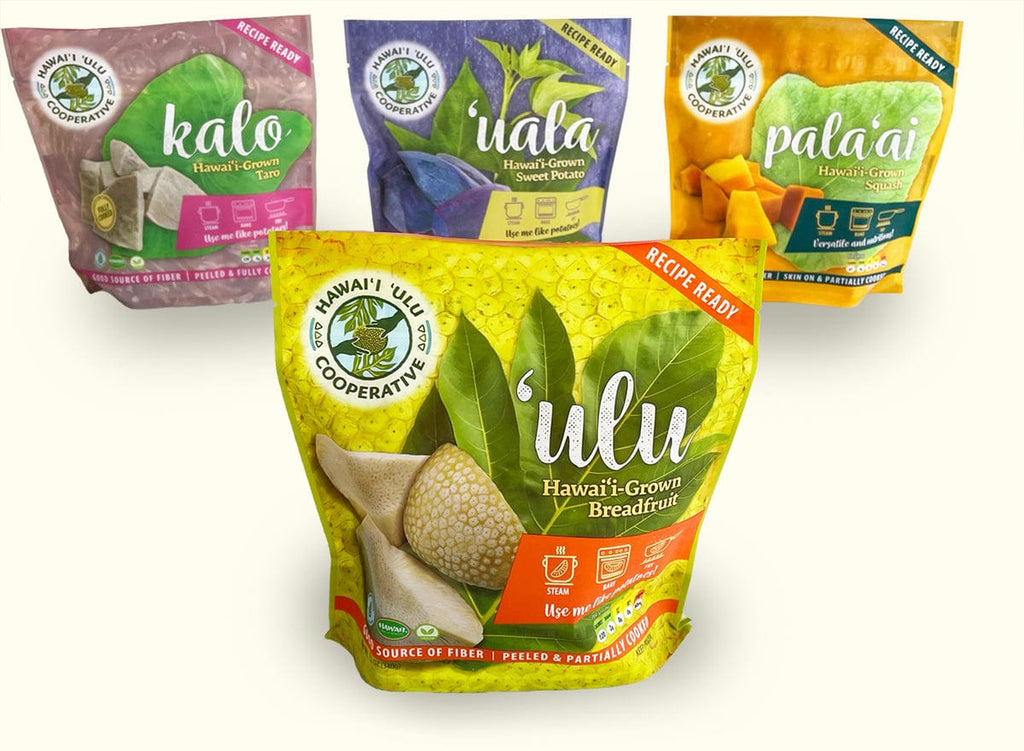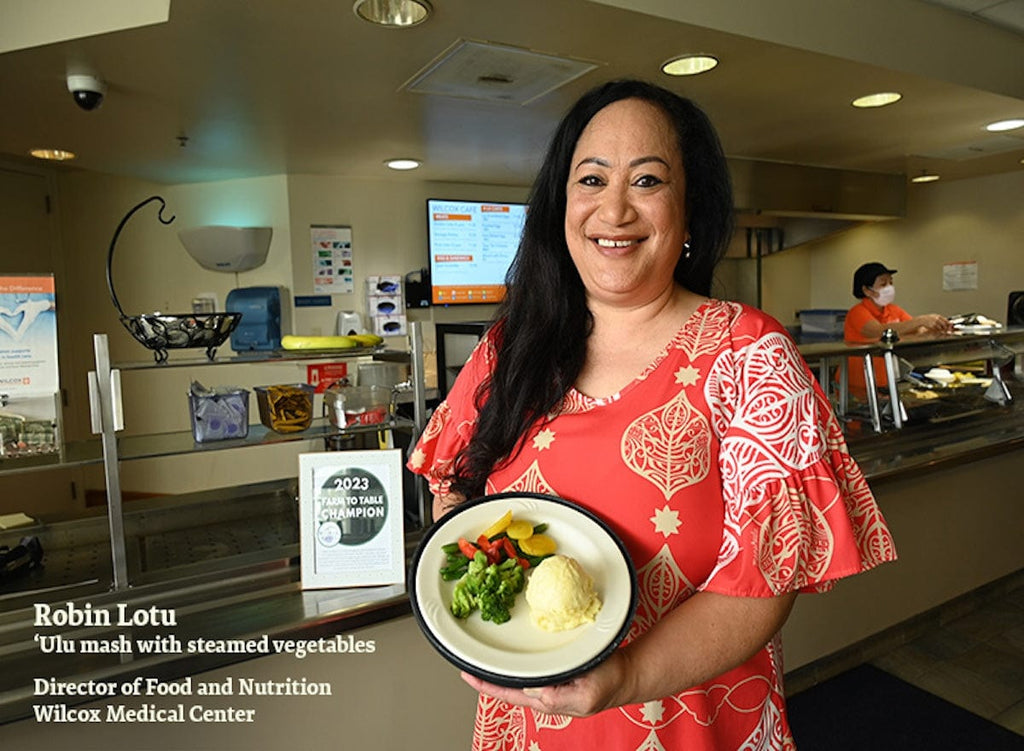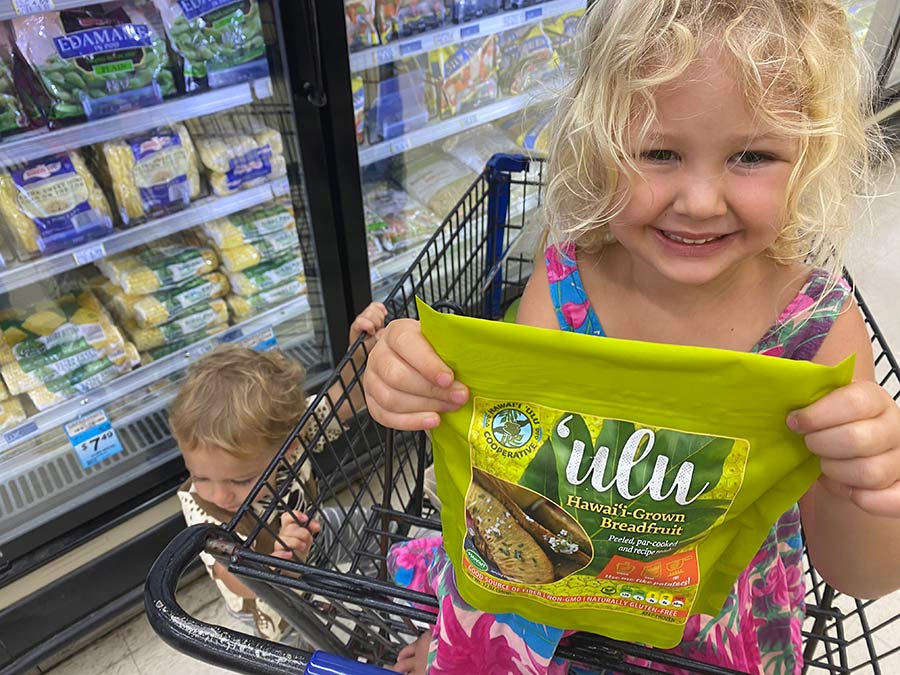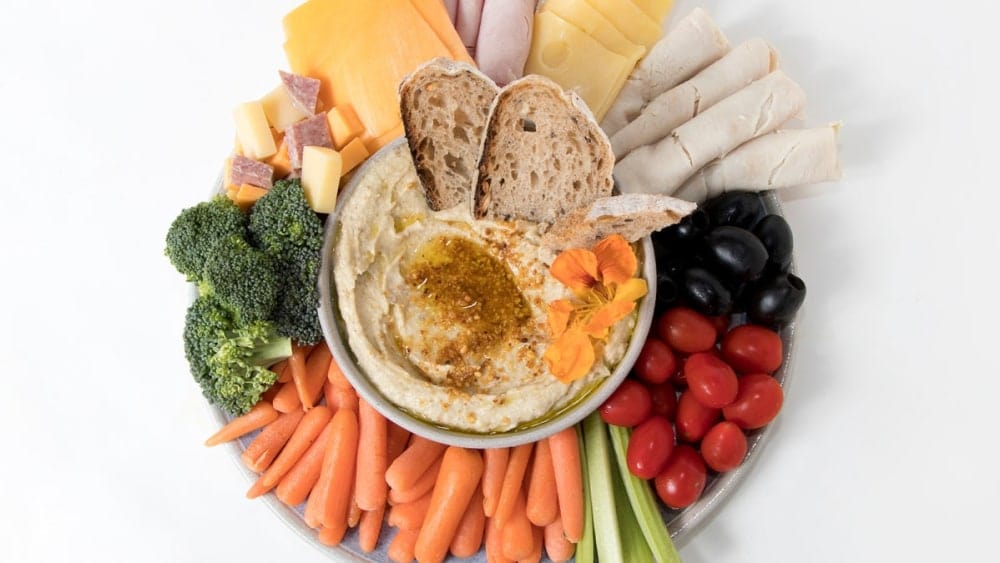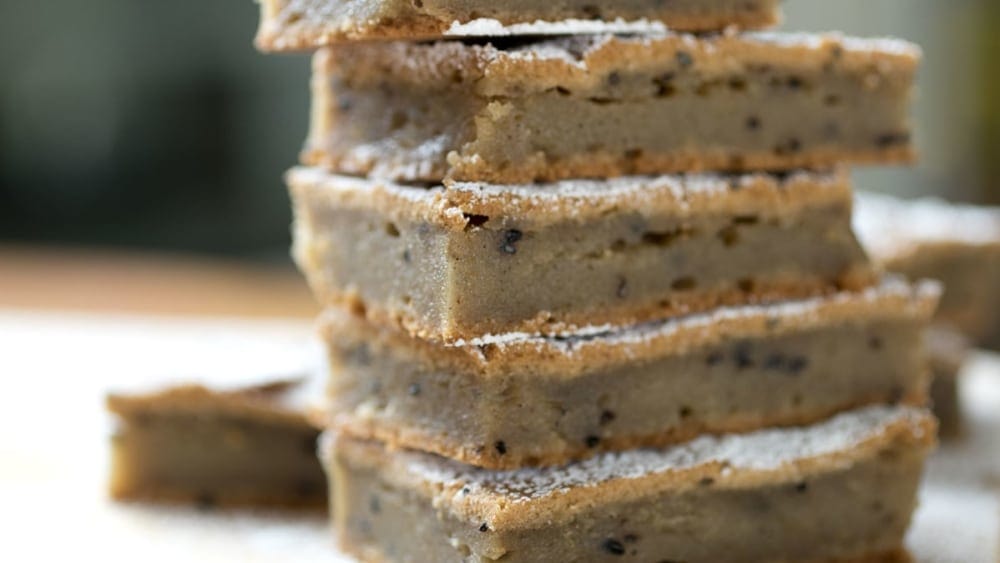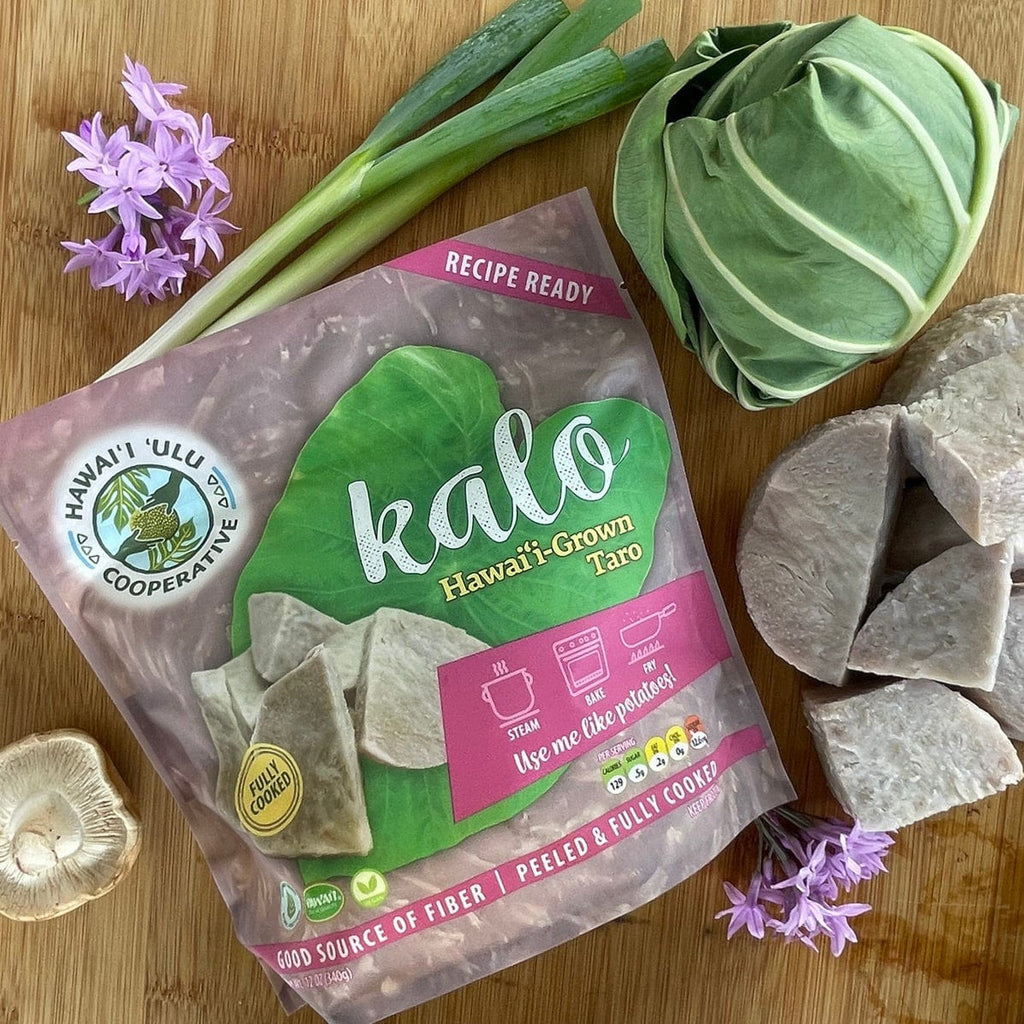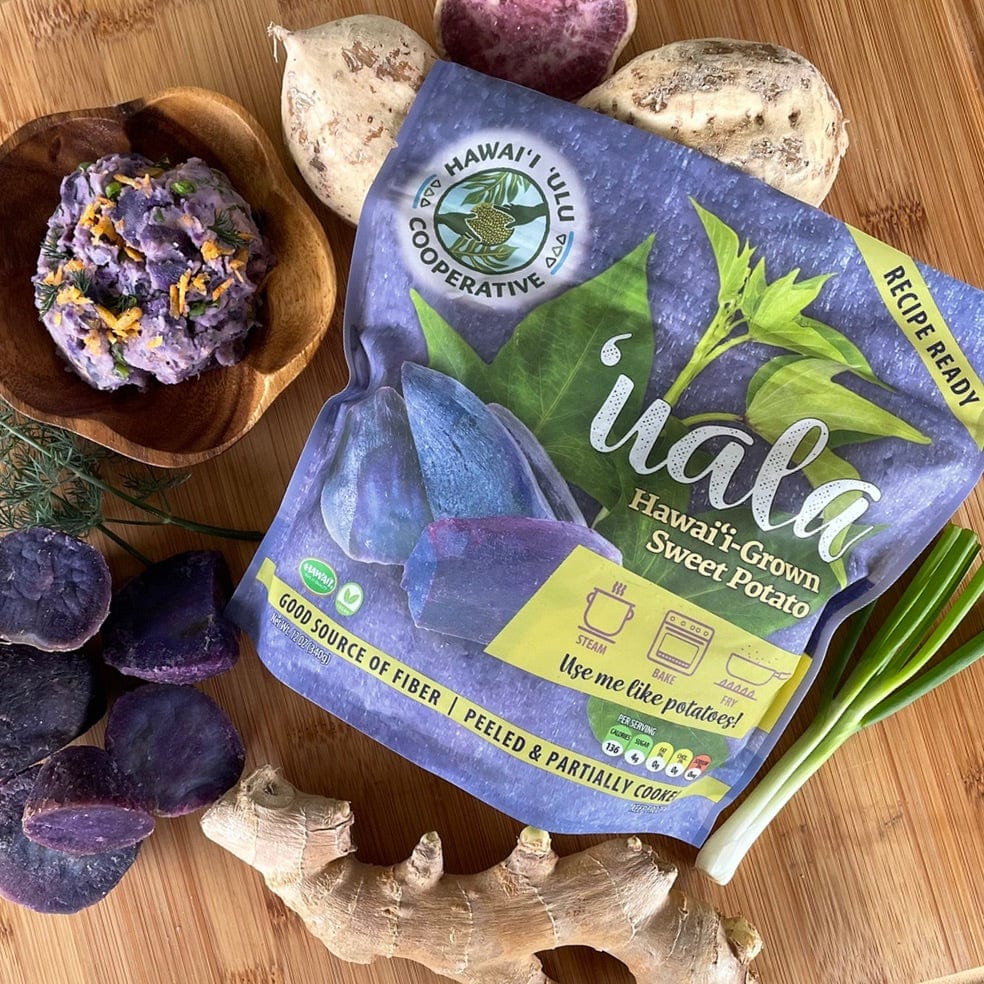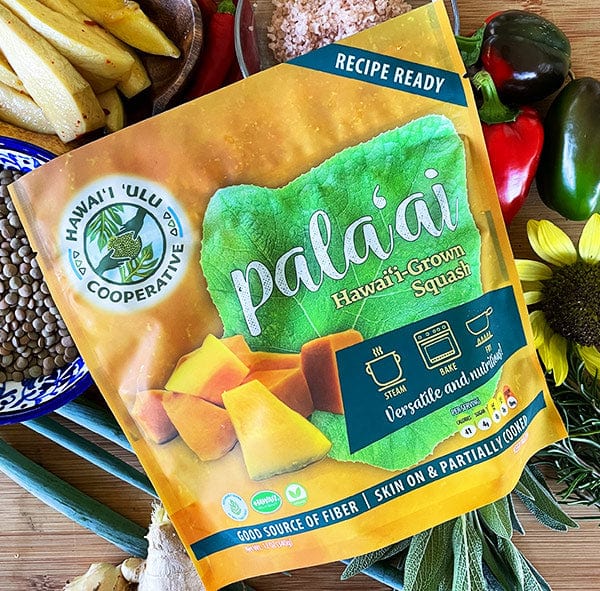‘Ulu, or breadfruit, is a highly versatile and nutritious tropical fruit that has been a staple in Pacific Island diets for centuries.
‘Ulu is low in fat and is non-GMO and gluten-free. It’s an excellent source of fiber, protein, and essential vitamins and minerals and offers a healthier alternative to imported starches such as potatoes, wheat, and white rice.
Depending on its ripeness, breadfruit can be cooked and eaten in various ways: firm and savory like a potato, sweet and creamy like a ripe banana, or even used like artichoke hearts.
The trees are resilient, helping to sequester carbon and withstand heat and drought, making them ideal for climate change adaptation.
The Hawai‘i ‘Ulu Co-op is endeavoring to revive its cultivation and use, promoting local agriculture and healthy eating habits.
ʻUlu in the Kitchen
Eating well is easy with our recipe-ready ‘ulu. Our minimally processed ‘ulu is picked fresh from our farmers' trees and washed, cut, steamed, and frozen, making it quick and easy to use anytime.
Our recipe collection showcases how versatile ‘ulu is: from chowder and ‘ulu chips to chocolate mousse and ice cream, it’s easy (and fun!) to make ‘ulu a frequent staple at your table.
Meet our ʻUlu Farmers
We formed the Hawai‘i ‘Ulu Cooperative to share knowledge about this remarkable fruit and make it easier for island residents and visitors to find, cook with, and enjoy ‘ulu year-round.
’Ulu is one of the most climate-friendly, nutrient-dense foods you can eat. You can support local farmers, regenerative agroforestry, and community health — and reduce Hawaiʻi’s dependence on imported staples — by eating more ʻulu.
We are Bringing ‘Ulu Back
ʻUlu has always been vital in sustainable island food and Pacific agroforestry systems.
Over the past 100 years, however, ʻulu and many of Hawai‘i’s other heritage crops have taken a back seat to imported, highly processed factory foods, negatively impacting our local economy and community health.
With revived interest in indigenous rights and local, national, and global food systems in recent years, traditional Hawaiian crops are garnering attention and making a comeback.
A Crop for Climate Resilience
‘Ulu is one of the world’s few perennial staple crops that grows on trees. With a decades-long lifespan and a high yield of hundreds of pounds of ‘ulu per tree, breadfruit is a vital crop for Hawai‘i’s food security and sustainability.
These large, majestic trees help to sequester carbon and reduce the need to till soil or control weeds. Their heat and drought tolerance make them a favored orchard crop in tropical communities most vulnerable to famine and climate change.
One tree can live for 100 years or more and produce hundreds, even over a thousand, pounds of fruit annually!
‘Ulu in Ancient Hawai‘i
ʻUlu is one of Hawai‘i’s original food crops that’s been a local staple for nearly a thousand years! ‘Ulu, or breadfruit, is an incredibly versatile food that can be prepared in various creative, delicious ways. Its nutritional content and the fact it’s one of the most sustainable and environmentally friendly foods on the planet makes it a healthy addition to almost any diet.
‘Ulu was not only a core staple food, but every part of the ‘ulu tree was used: the lightweight wood for building wa’a (canoes), hale (houses) and olo or alaia (surfboards); the tree and fruit sap as an adhesive, for wound care, and as a caulking and waterproofing agent; and the tree bark harvested and pounded into kapa (paper and fabrics). Many cultures in the South Pacific carry on these traditional uses today.


